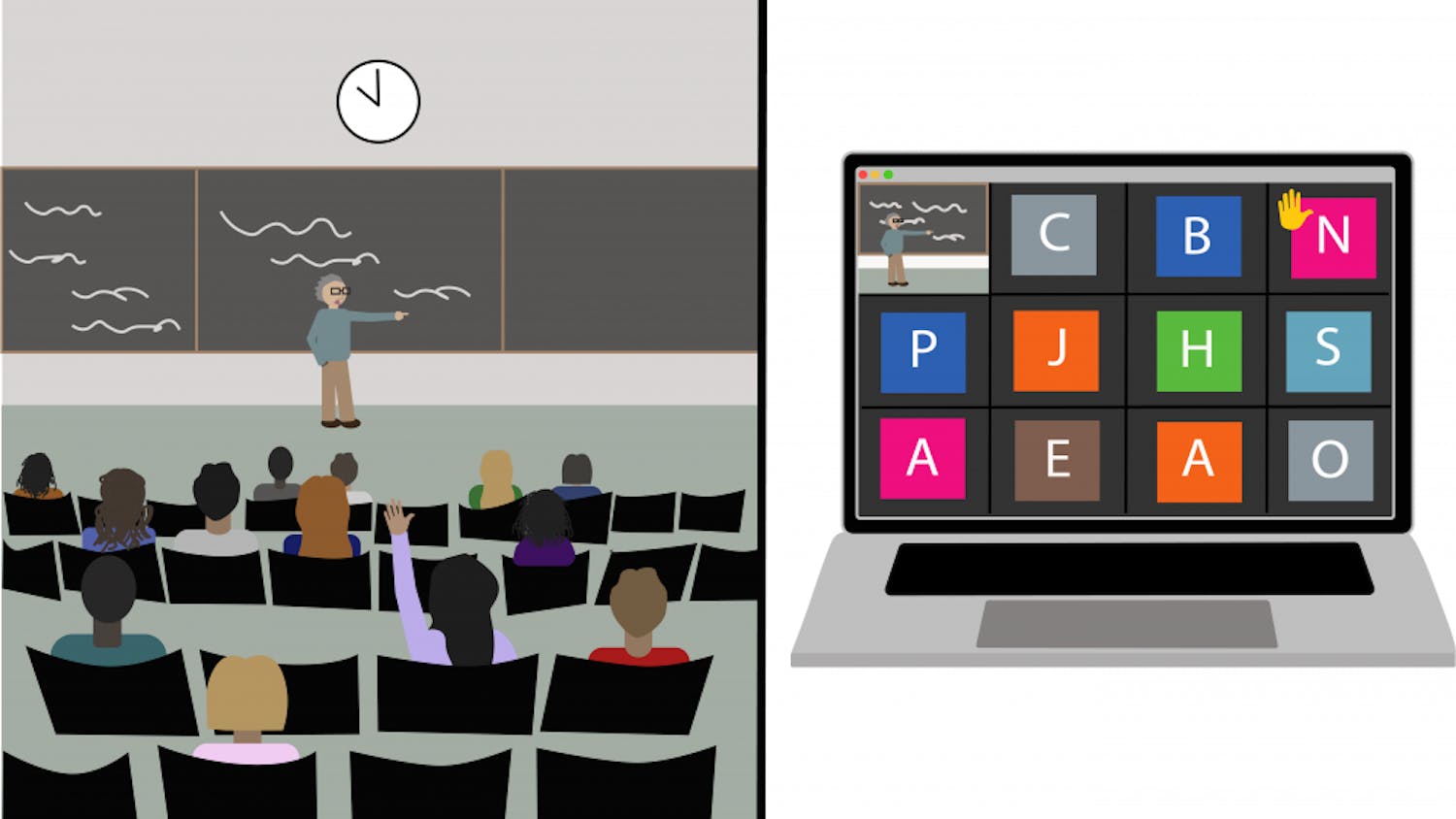The "starving artist" is an age-old cliche, but innovative visual artist Danica Phelps has spun this trope into a career - tracking her expenses and other everyday occurrences through her drawings and written records.
Phelps, who is based out of New York and received her MFA in 1995 from the Rhode Island School of Design, spoke Tuesday to an audience of Brown and RISD students and faculty who crowded into List Art Center 225.
Phelps traced the progression of her work from her undergraduate years to the present day.
Her undergraduate work included a set of old toothbrushes from friends wrapped in fabrics that somehow correlated to their former owners and a set of jars containing cut up romance novels, with the cover art visible.
Additional work from her undergraduate years dealt largely with issues of the magazine Hustler, which Phelps at times cut up or boiled down into a collection of flesh-colored liquids. Phelps said that she felt it was important to express humor, rather than anger, in her work, in order to "make people think about it."
Upon graduating from RISD, Phelps took the plunge and moved to New York with $800 in her pocket, living week-to-week in a tiny room and working as a waitress. Phelps said she started drawing everything she spent money on, in order to give greater meaning to the things she purchased and to keep track of her expenses. When she traveled from Europe to India for five months, she drew everything on which she spent money. "I like to draw as if I can see through things," Phelps said, adding that she studied primarily sculpture, rather than drawing, at RISD.
As Phelps started selling work at galleries, she decided she needed to price the work herself. She began putting the prices of her drawings right onto the works themselves as a "final gesture," she said. When a work was purchased from her collection, she would trace the work and put the tracing up in the original work's place. The tracing could in turn be sold and traced, thereby creating an endless supply in order to "flood the market" and "subvert the system," Phelps said. One of her pieces has reached a "20th generation" tracing, she said.
Phelps also began collecting the works of other artists and incorporating them into her own pieces by, at times, affixing them directly to her own creations, she said. Additionally she created a show based on work she received from 30 different artists in exchange for her own pieces, displaying both the acquired works and tracings of her original pieces in order to document the transaction. "You guys should trade with each other," she advised the students in the audience.
Phelps also became concerned with travel - specifically walking - in her work. At one point she documented a 28 day walk from Los Angeles to San Francisco through her drawings. Her series "Walking 9-5" paid homage to the eight-hour work day by turning it into a spatial measurement, as Phelps walked eight-hours daily from her home in Brooklyn to see how far she could get. In "Bill Trip" she visited all the places around the country where she sent her bills, which took her everywhere from the Midwest to Las Vegas. Extending her portrayal of everyday activities, her 2003 exhibit "Integrating Sex into Everyday Life" includes drawings of intimate moments with her lover. These days she has a team of assistants helping her create a massive series of multi-colored stripes which represent financial gains and losses.
Phelps' 50-minute talk concluded with a question-and-answer session in which she discussed her artistic influences and dealing with art critics. With the prevalance of economic transaction in her work, it was perhaps inevitable that one student would ask, "Are you financially secure these days?"
"No," Phelps replied with a laugh.




